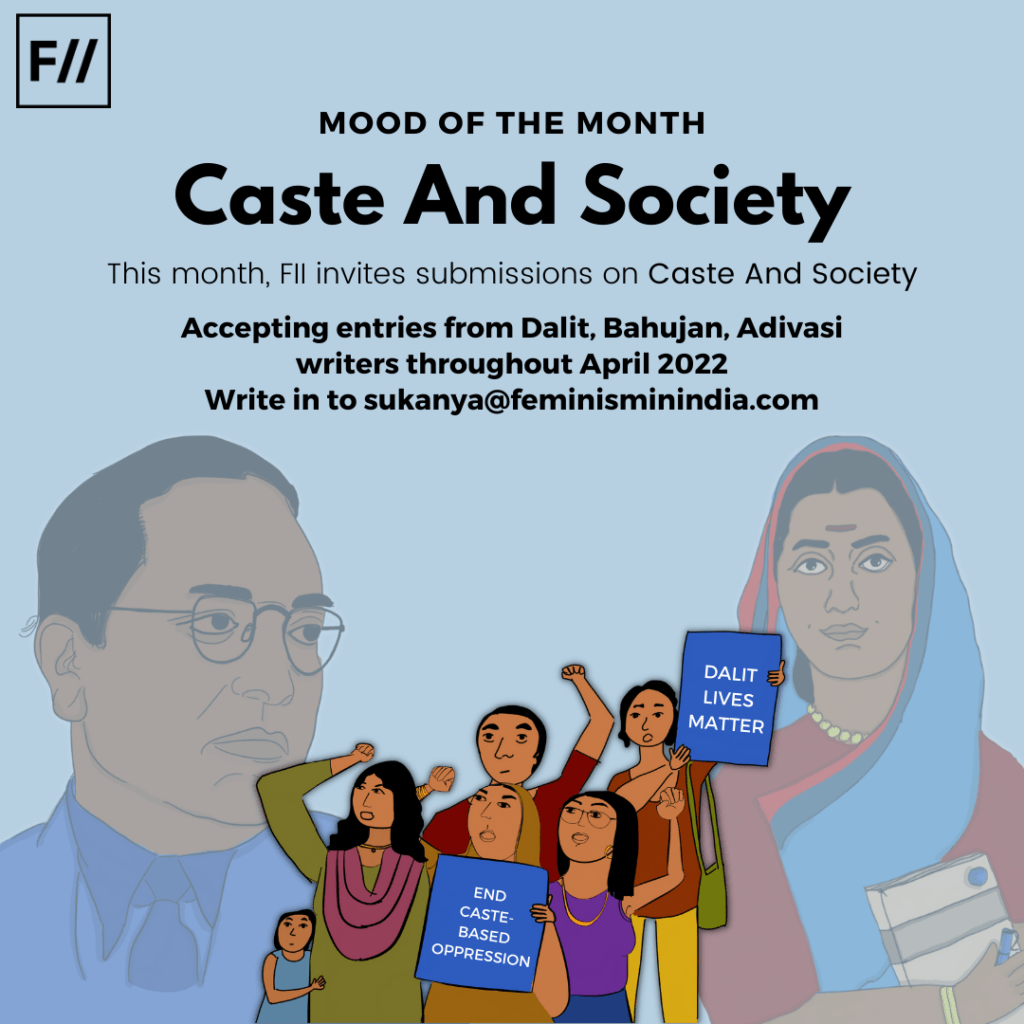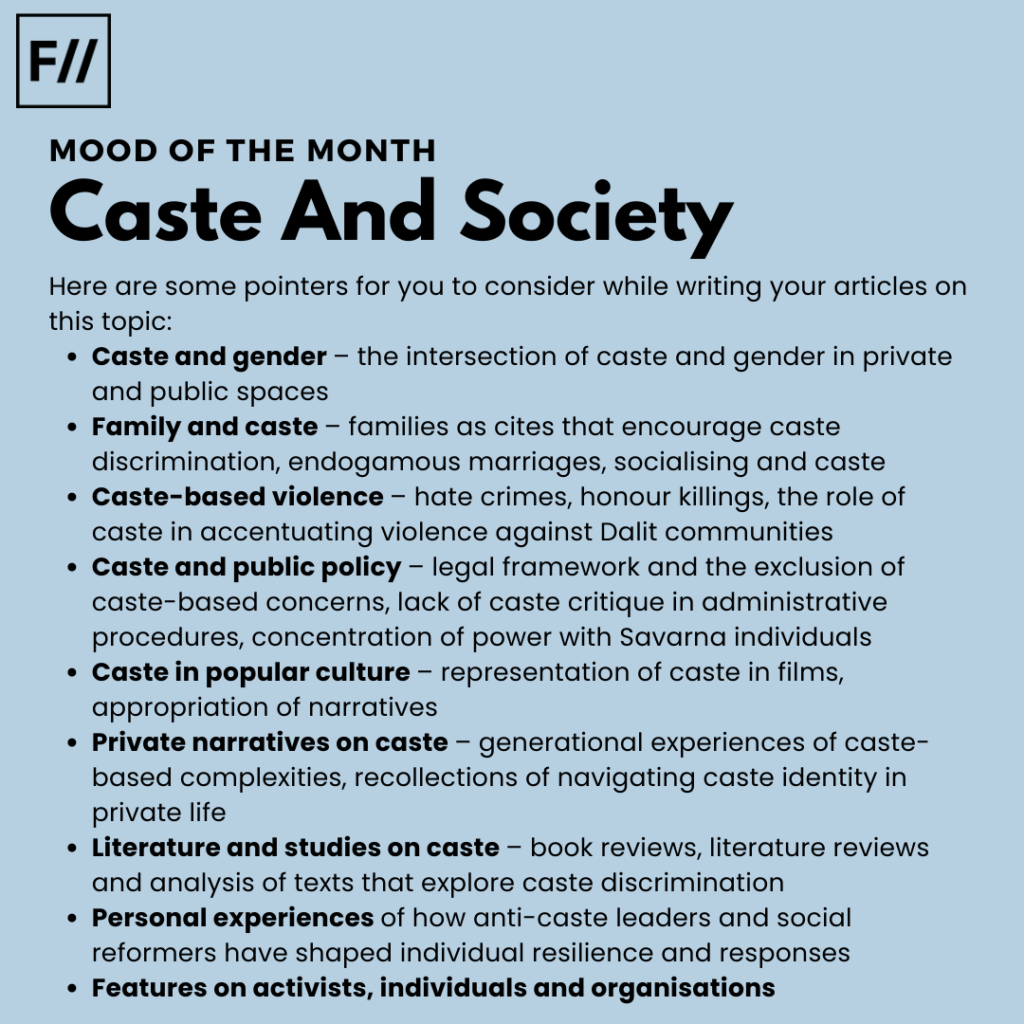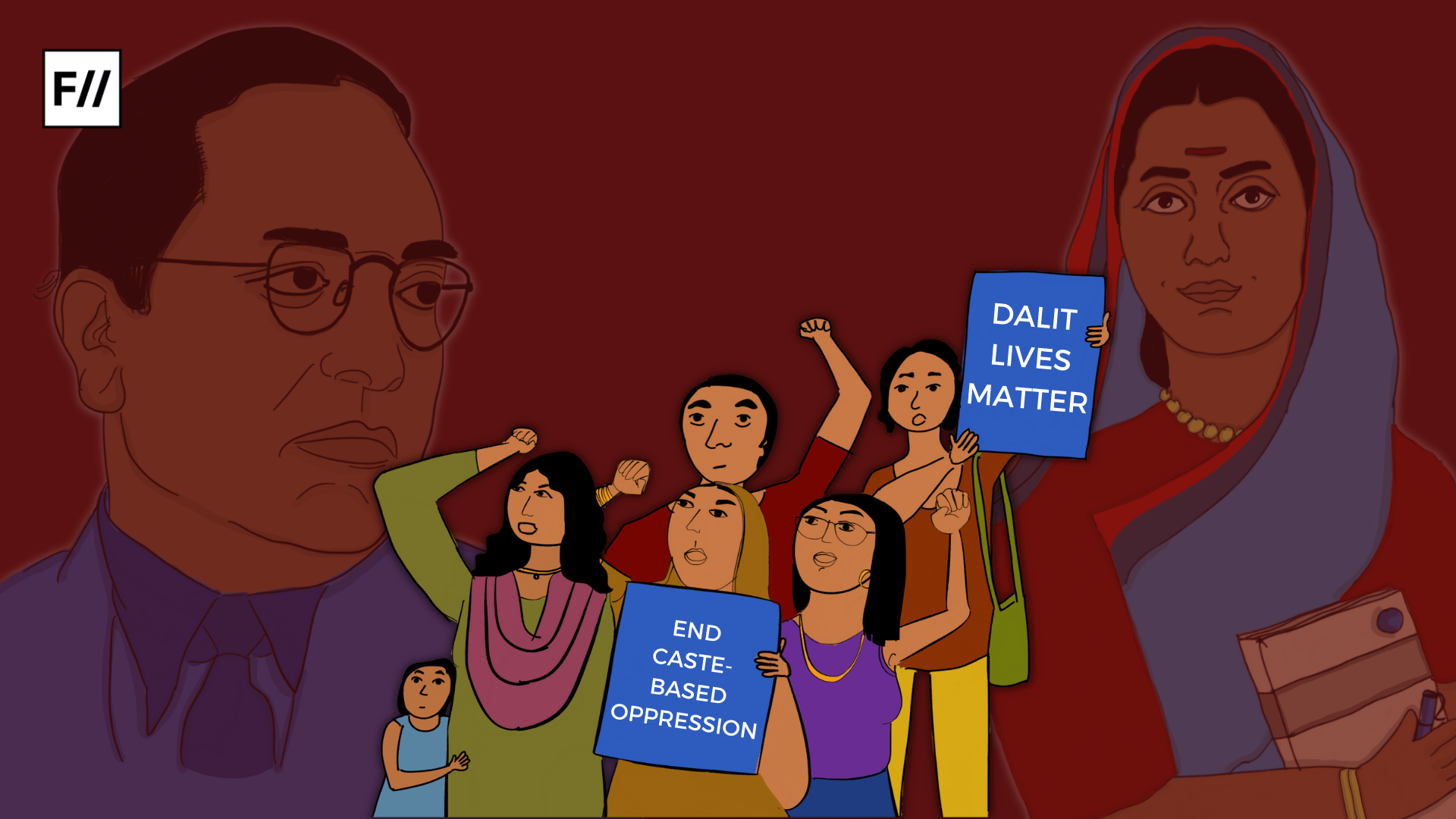Caste-based oppression is a reality that affects the mental, social and financial well beings of individuals in our society. Though our constitution lays down secularism and equality as some of its defining tenets, in practice, caste still dominates our social morality and conduct.
Caste-based oppression has its roots in history, where stratification was encouraged as the basis for social organization and conduct. Today, caste-based oppression forms a big part of crimes and violence in the country. Especially during the pandemic, the rate of violence against individuals from oppressed caste locations has increased.
The assigned caste of a person affects their social status, employment, access and emotional health. When we employ the gender lens, a woman belonging to a marginalised caste identity experiences a double jeopardy of being oppressed due to both her gender and her caste. The situation is tougher for queer individuals and disabled individuals.
Despite the pervasive nature of caste, we have very few insights or interest as a society into how to address this comprehensively. The political conscience is corrupt and tilted towards savarna interests, which further fuels the sidelining of the concerns faced by oppressed caste communities.
Also read: An Evaluation Of Social Reorganisation: Revisiting Dr. Ambedkar’s Nationalism
April is Dalit History Month, and we at FII invite submissions on Caste and Society, throughout April, 2022. We hope to add to the conversation on caste and facilitate narratives on caste from individuals who experience its complexities. We do not encourage appropriation, and entries will only be accepted from Dalit, Bahujan, Adivasi writers

Discrimination on the basis of caste begins as early as at home, and thoughts that are partisan, alienating and violent, are inculcated into the minds of young children, thus ensuring the continuance of the ‘othering’ of people from dominated caste locations. Our social life and decisions like marriage, friendships, family relationships, etc. are based on considerations of caste, where it is more desirable if we mingle with people who are ‘like us’.
Furthermore, the representation of caste in popular culture also solidifies the problematic idea that caste-based compartmentalisation is normal and even necessary. People belonging to marginalised castes are portrayed as dark skinned, violent, or incapable of acceptable social conduct. The control of these narratives and the access to tell stories, and participate in art lies with dominant caste individuals, and this enables them to create narratives that reinforce caste and a factor that can be used to distinguish people from one another.
There is hardly any depiction of joy, perseverance or other emotions when it comes to conversations or portrayals of people from oppressed caste locations. They are uses as political props either to be saved, sympathised with, or civilised by the savarna system.
The gaze, attitude, conduct, and responses of our society towards caste and caste-discrimination are riddled with different layers of violence and othering to an extent such that the mic is never fully passed to individuals who are at the receiving end. For the true essence of equality and social equity to reflect in everyday transactions of a society, it is important to have a transformative conscience both individually, and systemically.

April is Dalit History Month, and we at FII invite submissions on Caste and Society, throughout April, 2022. We hope to add to the conversation on caste and facilitate narratives on caste from individuals who experience its complexities. We do not encourage appropriation, and entries will only be accepted from Dalit, Bahujan, Adivasi writers.
Here are a few pointers which may help you articulates your thoughts:
- Caste and gender – the intersection of caste and gender in private and public spaces
- Family and caste – families as cites that encourage caste discrimination, endogamous marriages, socialising and caste
- Caste-based violence – hate crimes, honour killings, the role of caste in accentuating violence against Dalit communities
- Caste and public policy – legal framework and the exclusion of caste-based concerns, lacuna in execution of policies, lack of caste critique in administrative procedures, concentration of power with Savarna individuals
- Caste in popular culture – representation of caste in films, appropriation of narratives
- Private narratives on caste – generational experiences of caste-based complexities, recollections of navigating caste identity in private life
- Literature and studies on caste – book reviews, literature reviews and analysis of texts that explore caste discrimination
- Personal experiences of how anti-caste leaders and social reformers have shaped individual resilience and responses
- Features on activists, individuals and organisations doing irreplaceable work in the anti-caste discourse
This list is not exhaustive and you may feel free to write on topics within the theme that we may have missed out here. We understand that some topics may be personal and hence, if you wish to publish them anonymously, kindly mention that in your email.
Please refer to our submission guidelines before you send us your entries. You may email your submissions to sukanya@feminisminindia.com
We look forward to your drafts.
Also read: Remembering The Vision And Resilience Of Savitribai Phule On Her Birth Anniversary
Featured Illustration: Ritika Banerjee for Feminism In India
About the author(s)
Feminism In India is an award-winning digital intersectional feminist media organisation to learn, educate and develop a feminist sensibility and unravel the F-word among the youth in India.




